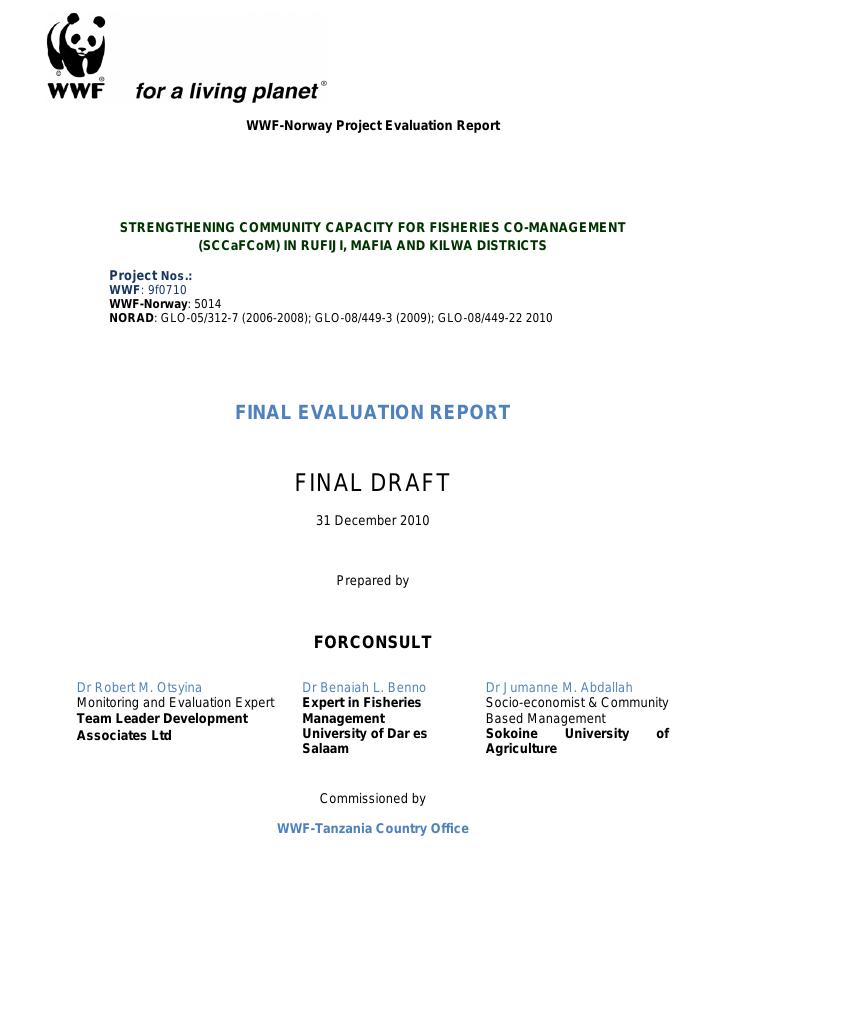Evaluering
Strengthening Community Capacity for Fisheries Co-management (SCCaFCoM) in Rufiji, Mafia and Kilwa districts (Tanzania)
The Eastern African Marine Ecoregion (EAME) is one of WWF’s highest priorities for biodiversity conservation. It stretches for 4,600 km along the east coast of Africa, covering an area of more than 540,000 sq km. The ecoregion features globally outstanding biodiversity, endemism and species abundance. More than 11,000 species are known of which about 1,650 (ca. 15%) are narrowly endemic to the EAME. Thirty-five marine mammal species, including the dugong - a close relative to the manatee and perhaps the rarest mammal in Africa - depend on the region for breeding and feeding. Several hundred coral, mollusc and sponge species and 1,500 species of fish depend on the longest fringing reef in the world. All five sea turtle species of the Indian Ocean breed here and the coelacanth lives in deep canyons along the coastline of the ecoregion. In Rufiji, Mafia and Kilwa areas, also known as the RUMAKI region, livelihood opportunities for the people living along the coastline are changing due to rapidly expanding population, putting ever increasing pressure on the limited fisheries resources. In some parts, traditional employment options such as small scale agricultural are becoming less available as land ownership for this type of activity is decreasing and new farming technologies needing fewer people are increasing. While more people are forced to depend on common pool resources such as fisheries, the productivity of these resources is decreasing due to increased population, resource depletion and habitat destruction to name a few. Ensuring sustainability of the livelihoods of the RUMAKI population, which is predominantly poor, is essential to promote fisheries management for the community to realise the importance of managing their resource base as well as poverty alleviation. The goal of the Project was “Improved socio-economic well-being of coastal Rufiji-Mafia-Kilwa communities through sustainable, participatory and equitable utilisation, management and protection of marine and coastal resources”.
